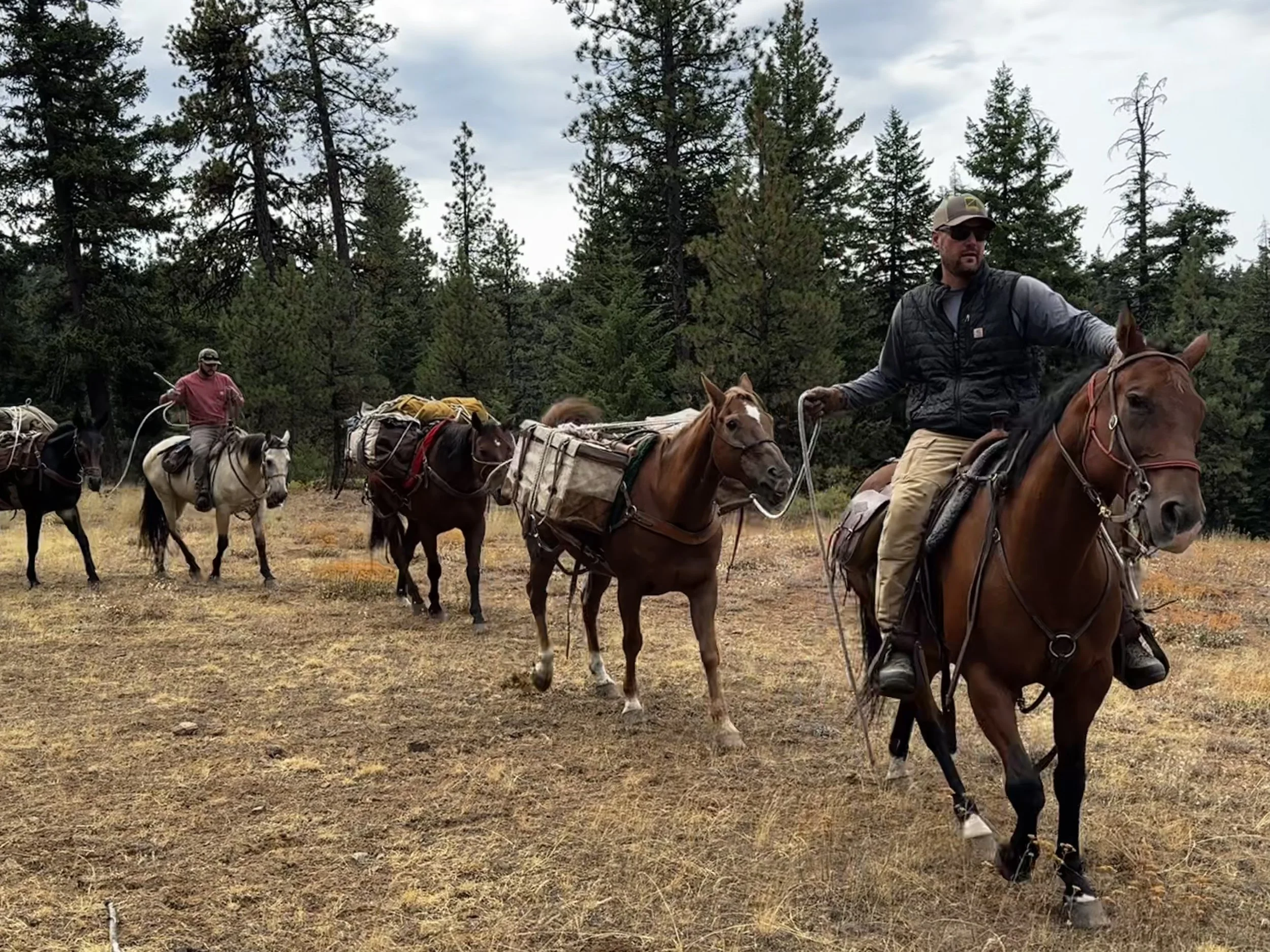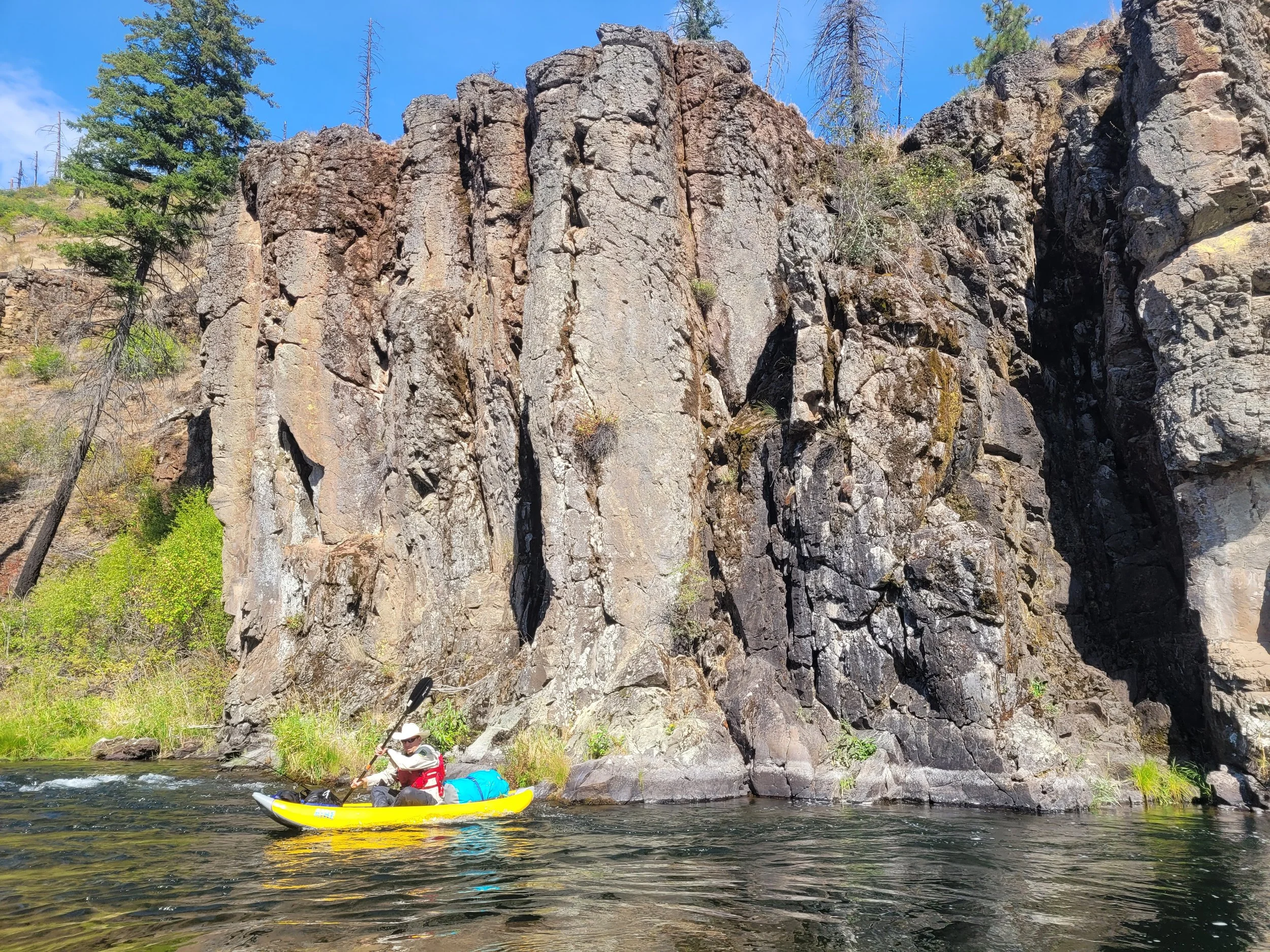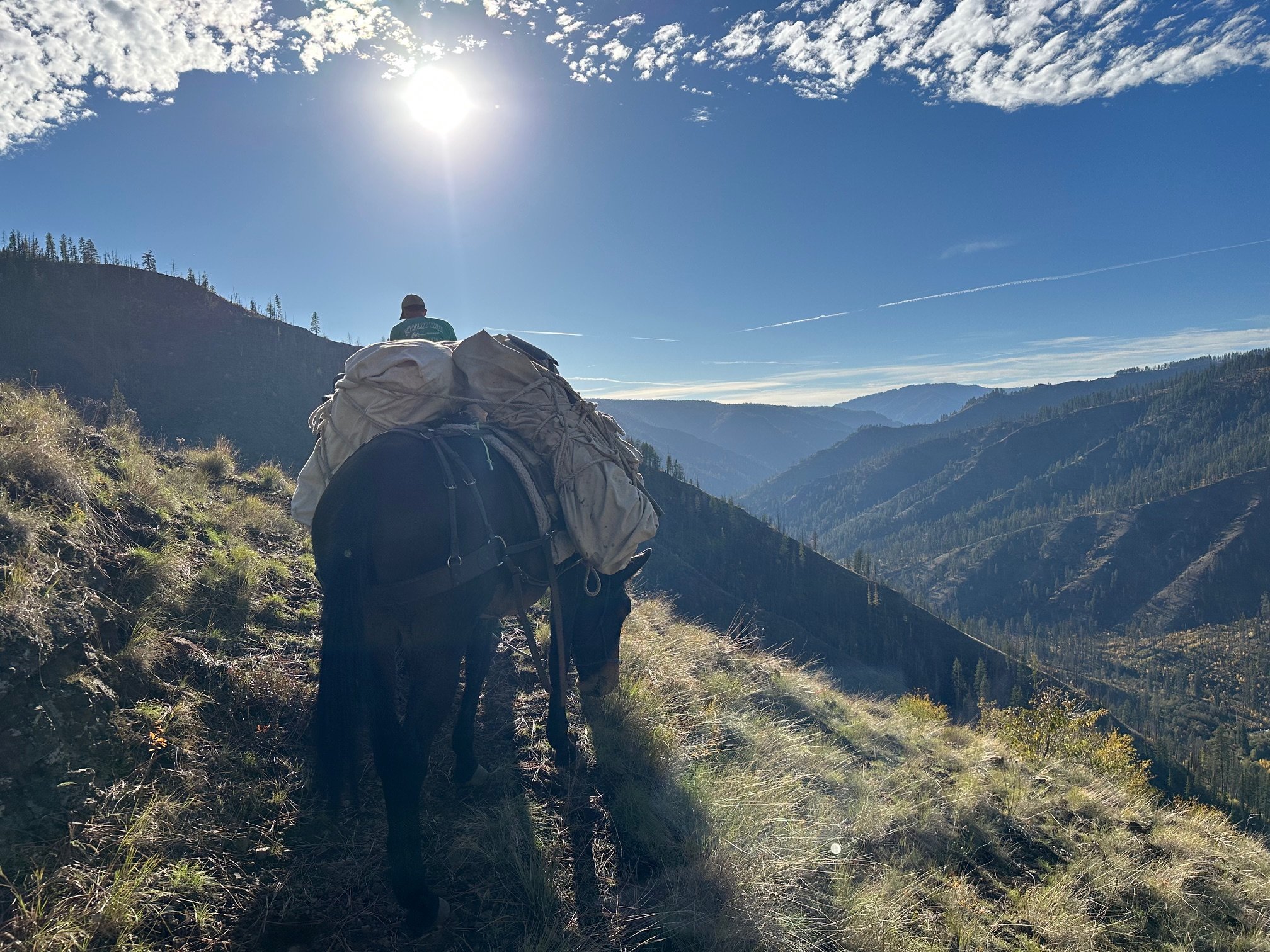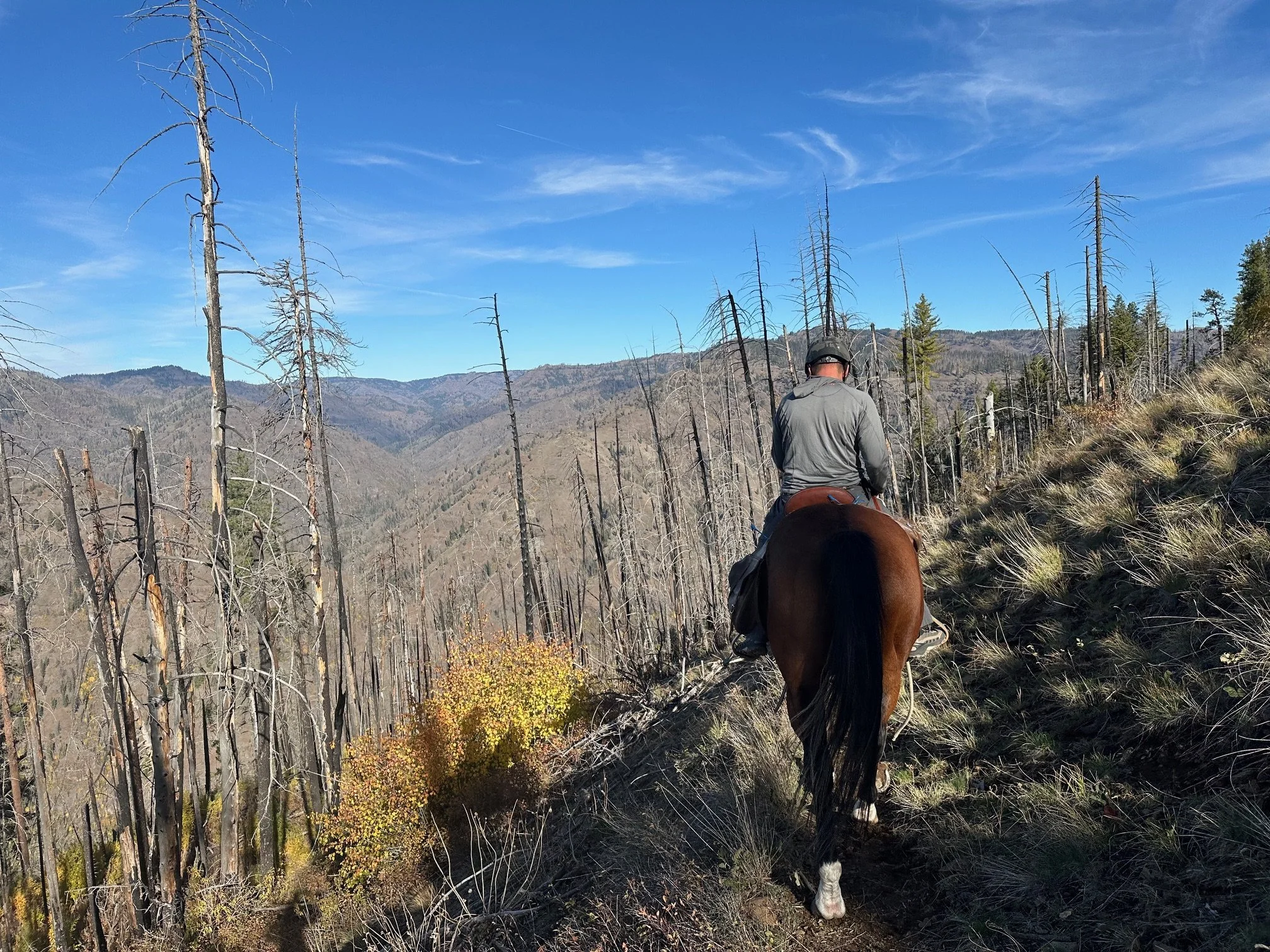A Thank You Letter to our 4-legged Wenaha Crew Members
Dispatches from MS student Emily Treadway working in the Wenaha River basin in eastern Oregon. Learn more about her project here!
This summer the Wenaha River Project wrapped up its wild ride of two field seasons. Emily Treadway led crews via kayak and horseback through the Wenaha Wilderness to complete spawning grounds surveys for a natural population of spring Chinook Salmon. The Wenaha River is a wild and scenic river with no road access, making all sampling efforts require complex logistics and sweat equity to accomplish. These surveys are truly “wild” and would not have been possible without the contributions of the Oregon Department of Fish & Wildlife horse packing team.
The Wenaha River canyon from Hoodoo Trail. Credit: Emily Treadway
Phillip Perrine and Corey Crossely packing in survey equipment into the Wenaha River canyon with Lil Joe, Scooter, Pistol, Scout and Marley. Credit: Emily Treadway
The summers were kicked off by installing four remote passive integrated transponder (PIT) antennas throughout the Wenaha River spawning grounds to detect tagged fish movement patterns. Each site requires a 40–60 ft long antenna, a black weatherproof computer box, two 35 lb lithium batteries and a 4x6 ft solar panel. Thankfully, the journey was all downhill into the canyon! While human power was used to get it all down there, getting it all back out was a job for our 4-legged coworkers. After these antennas collected data from June through October for two seasons, the horses and mules packed out everything up the 2500 ft canyon. Thanks to the packing team, 3,420 detections across 661 individuals from spring Chinook Salmon, Bull Trout, Mountain Whitefish, Rainbow Trout, and Steelhead were collected.
Gerrit Buch, Polly Gibson, Joseph Feldhaus, and Justin Fisk packing in the solar panel for one PIT antenna installation. Credit: Emily Treadway
Mike Lance, Scooter, Marley and Gigi (unpictured) packing out the mainstem PIT antenna equipment. Credit: Emily Treadway
The core sampling of this project required the sampling crew to complete weekly floats from the headwaters of the Wenaha River to the mouth in Troy, OR. This is a 22 mi floating journey completed via inflatable kayaks. Cue the packing team, who every week would carry in the kayaks, float gear, camping gear and food for the week. Surveyors could then arrive at camp with all of their gear waiting for them after hiking and surveying for 12 miles through brush and stream. Surveyors spent week after week living in the wilderness, kayaking the spawning grounds collecting bio data from spawned carcasses, marking redds, and recording live adult Chinook Salmon. The heavy lifting of the horse packing team allowed crews to identify and quantify the presence of stray hatchery origin spring Chinook Salmon that are spawning with natural origin Wenaha River fish. [Read more here!]
A pile of kayaking gear required for surveying. (Unpictured, the other half of the gear) Credit: Emily Treadway
Joseph Feldhaus paddles down the Wenaha River looking for Chinook Salmon. Credit: Emily Treadway
This project required many long, hard nights and days spent on the Wenaha River spawning grounds, which was no small feat. So, a final thanks to all the people that poured their literal blood, sweat, and tears into this field work, ODFW East Region Fish Research's’ Lower Snake River Compensation Plan team, and Life Cycle Monitoring Team. And finally, a special MASSIVE thank you to our unsung heroes, the 2-legged Phillip Perrine , Corey Crossley, Brian Ratliff, Dusty Deehan, and Mike Lance as well as the muscle of the operation, Scooter, Lil Joe, Pistol, Scout, Marley, and Gigi.
Snack break on the trail during the PIT antenna gear pack out. Credit: Emily Treadway
Packing down to remove the Butte Creek PIT antenna. Credit: Emily Treadway







